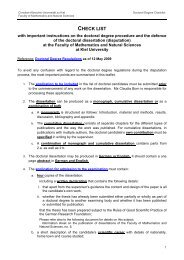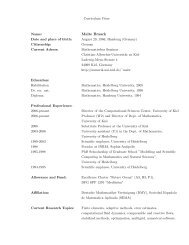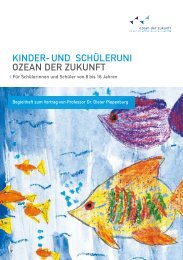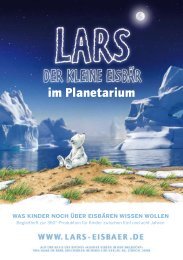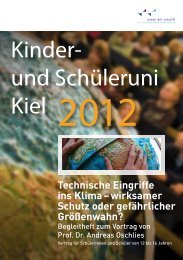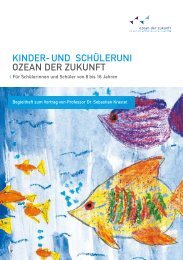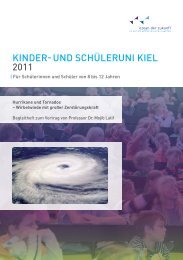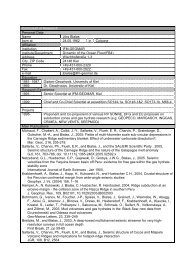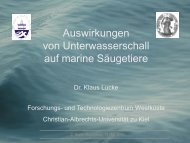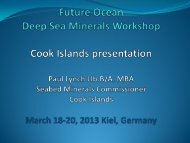Untitled - The Future Ocean
Untitled - The Future Ocean
Untitled - The Future Ocean
- No tags were found...
Create successful ePaper yourself
Turn your PDF publications into a flip-book with our unique Google optimized e-Paper software.
2.1.4 Research Topic A4: <strong>Ocean</strong> Circulation and the Hydrological Cycle during the Holoceneand AnthropoceneCoordinators:Prof. Schneider, Ralph, R.Prof. Latif, Mojib04.03.1958 29.09.1954Christian-Albrechts-Universität zu KielLeibniz-Institut für MeereswissenschaftenInstitut für GeowissenschaftenIFM-GEOMARLudewig-Meyn-Str. 10FB1: Ozeanzirkulation und Klimadynamik24118 KielDüsternbrooker Weg 2024105 KielTel.: 0431-880 1457Tel.: 0431-600 4050Fax: 0431-880 4376Fax: 0431-600 4052Email: schneider@gpi.uni-kiel.deEmail: mlatif@ifm-geomar.deFurther Proponents: N. Andersen, C. Böning, A. Eisenhauer, S. Flögel, M. Frank, P. Grootes,R. Schneider, A. Srivastav1. Summary / ZusammenfassungStrong perturbations of ocean thermohaline circulation and global temperature distribution haveoccurred on short-term scales during warm and cold climate stages over the past 60,000 years.Similarly, sudden climate changes may also occur in the near future and can happen as a functionof both natural or anthropogenic forcing mechanisms. In order to differentiate both effects, A4 aimsto comprehensively investigate the spatial and temporal evolution of temperature and precipitationchanges. This will be achieved by combining quantitative marine proxy records and fully coupledclimate models into which changes in natural forcing, such as parameters of the earth's orbit, theradiative effects of volcanic dust and aerosols, as well as total solar irradiance variations will beintroduced. By applying advanced statistical analysis and innovative model concepts, a new JRGwill aim to identify spatial and temporal patterns of natural climate variability in proxy and modeldata. <strong>The</strong>se patterns will be compared with those apparent in ensemble model experiments for thecoming millennium. For this purpose, Holocene climate simulations will be extended by applyingvarious scenarios for future anthropogenic greenhouse gas emissions. This will permit anadvanced assessment of natural and anthropogenic forcing mechanisms which disturb oceancirculation and the hydrological cycle, as well as the potential influence of these perturbances oncontinental climates in future.Starke kurzfristige Veränderungen in der thermohalinen Zirkulation des Ozeans und in derglobalen Temperaturverteilung hat es mehrfach innerhalb der letzten 60.000 Jahre während KaltundWarmzeiten gegeben. Derartige Klimaänderungen sind auch für die Zukunft zu erwarten,bedingt sowohl durch natürliche Antriebsmechanismen des Klimas als auch durch anthropogene45



